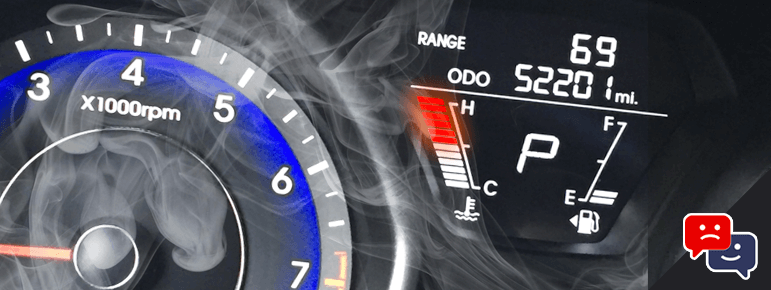If you need to do some routine maintenance on your car, or your car has overheated and broke down, you may be wondering how long does it take a car to cool down? After all, the last thing you want is to burn yourself working on the car.
At normal operating temperatures of 190° a car typical requires 30-45 mins to cool down to a safe temperature to inspect and work on. However, a car that has overheated at 220° and above requires 2-3 hours to cool to avoid the risk of being burned or seriously injured.
For example, a typical car operates between 190° and 195° and attempting to inspect or work on it before cooling down may result in first or second-degree burns.
Even worst, a car that has overheated at 220° or higher has the potential to instantly burn and scare your skin, requiring medical attention.
As you can see, that’s why it’s so important to let the car cool down before doing anything. And once the car has cooled, you can proceed with your inspection or repair.
However, keep in mind this rule doesn’t just apply to the engine either. A vehicles transmission, exhaust, and brakes all create and retain heat.
In particular, an exhaust system can reach temperatures of 300° to 1,600° Fahrenheit – hot enough to create third-degree burns!
Just be sure to take all safety precautions into account, and let your car cool down thoroughly before doing any work on it.
In this post, we’ll take a closer look at how long does it take for a car to cool down and some helpful tips to keep you safe.
How Long Does It Take For A Car To Cool Down: The Three Main Factors
Your car’s cooling time will depend on several factors. These include how long the car was running, outside air temperature, and if the car overheated due to a mechanical failure.
Let’s dive into each one to learn more.
How Long The Car Had Been Running
A car that has been driven only a few minutes will take much less time to cool down than one driven a few hours. The biggest factor here is if the car had been running long enough to reach normal operating temperature of 190° and 195 degrees. If so, then the minimum of 30 to 45 minute cool down rule applies.
When a car does reach normal operating temps, engine oil will reach temperatures between 230-260°F, exhaust system between 300° to 1,600° F and antifreeze temperatures of 195 to 220°F.
As you can see, when driven long enough a car will create and retain heat.
Outside Air Temperature
The outside air temperature can have a big effect on how quickly your car cools down. When you shut off the car, fluids are no longer circulating absorbing heat. And if it’s a hot summer day, the air temperature will cause the car to retain that heat even longer.
On the other hand, a cold winter day will help a car shed heat faster. But keep in mind, once the car has reached operating temperature, the engine, fluids, and exhaust will still be hot to the touch despite the winter chill.
However with that said, a cold winter day will help accelerate the cool down period by several minutes.
Mechanical Failure
When a vehicles cooling system fails, it causes the engine to overheat and run well past normal operating temperatures. In fact, an engine is considered overheated at a temperature of 220°F and above.
While the source of a overheated engine typically stems from a coolant leak, faulty radiator fan, or broken water pump – low oil could also be the culprit.
For example, if your car suffers from oil consumption problems, it will result in too little oil in the engine causing heat build up. While engine oil is required for lubricating critical engine parts, it also plays a big role in cooling too.
If your car overheats from a mechanical failure, it will require 2 to 3 hours to cool down completely.
Never continue to drive a car that is overheating. Pull off to a safe spot away from traffic, and let the car cool down before inspecting it.
If you notice steam or smoke spewing from under the hood, turn off the car and call for a tow to the nearest mechanic.
Final Thoughts
Always take temperatures into account when inspecting or working on a car, whether it’s a traditional gasoline-powered car or hybrid. If the engine or its components are too hot, you could be at risk for serious burns. Let the car cool down before inspection to avoid any potential injuries.
By following these simple tips, you can help keep yourself safe while working on your car. Whether you’re changing your own oil or checking the air filter, always remember to wait a minimum of 30 minutes to cool down before inspecting or working on any components.
If your car has overheated from a mechanical failure, be sure to get to a safe spot away from traffic and let the car cool down before inspecting the engine.

Managing Editor
Christopher is an automotive technical writer. When he’s not at the local autocross event, he can often be found working on one of his cars. Specializes in automotive class action law, industry trends, and automotive maintenance. Email me direct, or learn more about us

